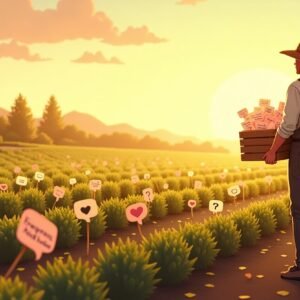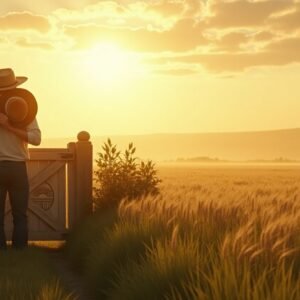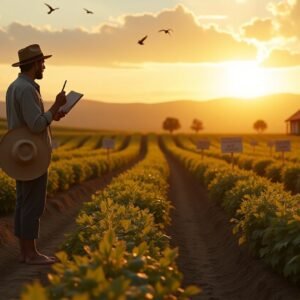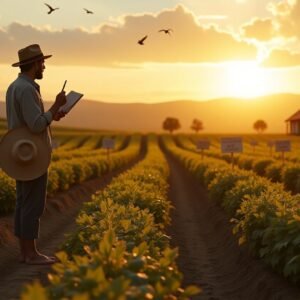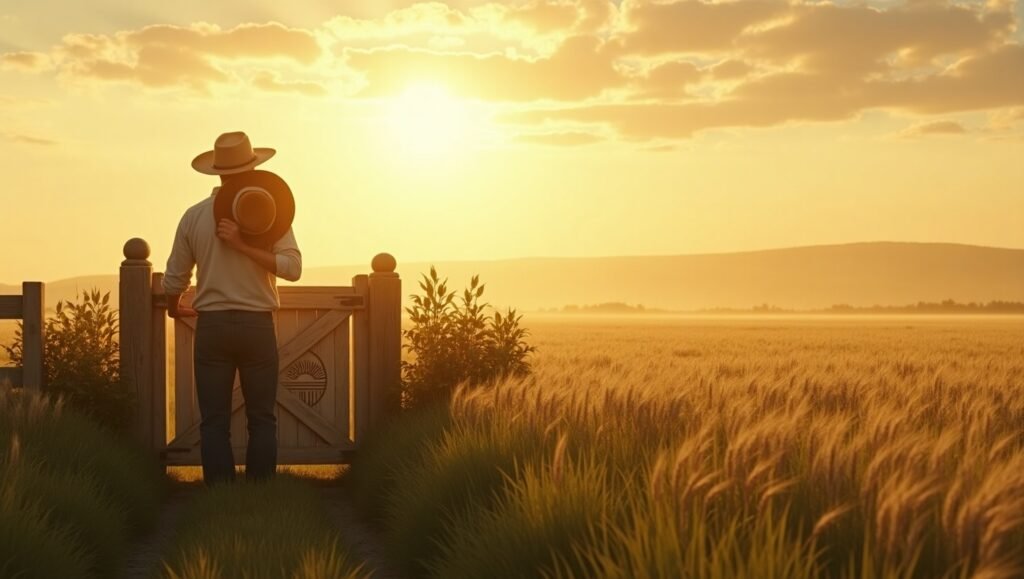
Direct Moi | Harvesting Protection: A Farmer’s Tale of Legal Foresight in Branding
Hello and welcome to Direct Moi.
The morning fog hung low over the valley, curling gently above the golden fields like a memory refusing to leave. The farmer stood at the edge of his land, fingers brushing the brim of his sun-faded hat, as he gazed out over the rows of green that swayed with a rhythm only nature understood. His boots were caked in soil, but his mind wandered far beyond the fences—toward the future of the brand he had lovingly grown.
He was no longer just a man with a hoe and a dream. Over the seasons, he had built something bigger than a farm. He had created a name—a reputation. People came from villages near and far, not just for his produce, but for the story that clung to it like morning dew. His brand was more than a logo on a crate or a clever jingle on the local radio. It was trust. It was memory. It was the kind of legacy passed down with pride.
But as the sun climbed higher, bringing clarity to the land, a shadow grew in the farmer’s thoughts. It had started with a letter—unsigned, unfamiliar—a cold wind on a warm day. Another vendor, far from his village, had begun selling goods under a name eerily close to his. Their labels mirrored his colors. Their packaging whispered echoes of his story. The resemblance was not coincidence. It was theft dressed in flattery.
The farmer, though rooted in honesty, felt a tremor of unease. His heart, so long focused on nurture and growth, had never pondered protection. What if others could take what he had built? What if they could ride on his name, his sweat, his voice—without ever having walked a single row of his field?
That evening, as twilight settled like dust on his porch, the farmer lit a single oil lamp and opened a blank ledger. There were no rows to hoe, no seeds to bury—only thoughts to turn over like soil before rain. He realized, slowly and surely, that just as a house needs more than walls to stand, a brand needs more than charm to survive. It needed law. It needed roots that reached beneath the surface, hidden yet strong.
He began with trademarks—a word he had heard but never really understood. As he read by lantern light, he discovered it was the armor of identity. His farm’s name, the hand-sketched emblem of the rising sun above a stalk of wheat, even the way people said his brand—all of it could be his alone, under law. A trademark was not a vanity; it was a line in the sand. It meant no one else could sow confusion in his customers’ minds by mimicking his name or style.
The farmer made arrangements, filed the papers, and marked his name in ink. For the first time, he felt his brand wasn’t just alive—it was legally his. And with that came a new sense of peace, the way a field settles after the first strong rain.
But the farmer didn’t stop there. His mind was already turning toward the songs his daughter had written for their market days, the illustrated flyers they handed out, the packaging adorned with careful patterns drawn by his wife’s hand. These, too, he learned, were vulnerable. These, too, could be protected—not by fence or pitchfork, but by copyright.
He discovered that copyright cloaked creative work like a warm, invisible coat. It gave him exclusive rights to the things born of imagination: the jingles, the slogans, the artwork that made his brand feel like home. He registered them, each one a line in a new story of protection. And as he did, the fear began to fade. The winds of doubt had lost their bite.
Still, he knew that words spoken between friends often wither in bad seasons. He had once trusted a vendor who failed to deliver crates on time, costing him precious sales. He had worked with a cousin on branding who later claimed the design as his own. These memories returned like crows over fresh seed. And so, the farmer began drafting contracts.
At first, it felt cold—turning trust into paper. But he came to understand that a well-written contract was not distrust; it was clarity. It was rainwater caught and saved for drought. He wrote terms, defined roles, and outlined responsibilities. Whether it was a vendor agreement, a partnership deal, or an employment promise—each was penned with care. Each was signed with mutual respect.
As the brand grew, so did curiosity. New collaborators came, eager to discuss future plans, new product lines, potential expansions. But the farmer had learned—ideas, like seeds, must be kept safe until they’re ready to sprout. And so, he discovered the power of Non-Disclosure Agreements (NDAs)—a simple yet vital tool to keep sensitive information from wandering off into someone else’s soil.
The legal tools didn’t end with documents. They became a way of thinking—a quiet framework behind every decision. He began to see the law not as an enemy of creativity, but as its loyal companion. Protection was not about fear. It was about freedom—the freedom to grow, to scale, to dream without the looming threat of theft or sabotage.
But like any wise farmer, he knew that one season’s labor did not guarantee the next. He hired a trademark attorney, someone who could till the legal land better than he ever could. They walked together through the paperwork, reviewed trademarks, evaluated copyrights, and updated contracts. The attorney became a sort of field guide through the thickets of law, pointing out hazards, clearing confusion, and sowing clarity.
In time, the farm’s brand became a landmark. Not just in the physical world, but in the minds of those who tasted its fruit, heard its story, trusted its name. The farmer’s crates were stamped not only with logos—but with legal ownership. His identity was no longer vulnerable. It was protected, preserved, and respected.
And as he leaned against the gate one cool evening, listening to the wind rustling through the wheat, he smiled—not because the journey was over, but because it was secure. He had come to understand that branding was not only about emotion and imagination. It was also about grounding. Just as he wouldn’t build a barn without a foundation, he would never again build a brand without legal roots.
He watched the horizon as the sun dipped low, light catching the corners of the land he’d guarded with law and love. He knew storms would come again. There would be winds, and competitors, and unexpected claims. But this time, his brand stood strong—not just in the hearts of his customers, but in the eyes of the law.
And in that strength, the farmer found peace.
Thank you for listening to this journey through the legal roots of branding, the farmer’s way.
If this story planted a seed in your heart, like, share, comment, or pass it along to someone tending their own brand with care.
Until next time—stay grounded, stay wise, and keep growing what’s yours. 🌾




